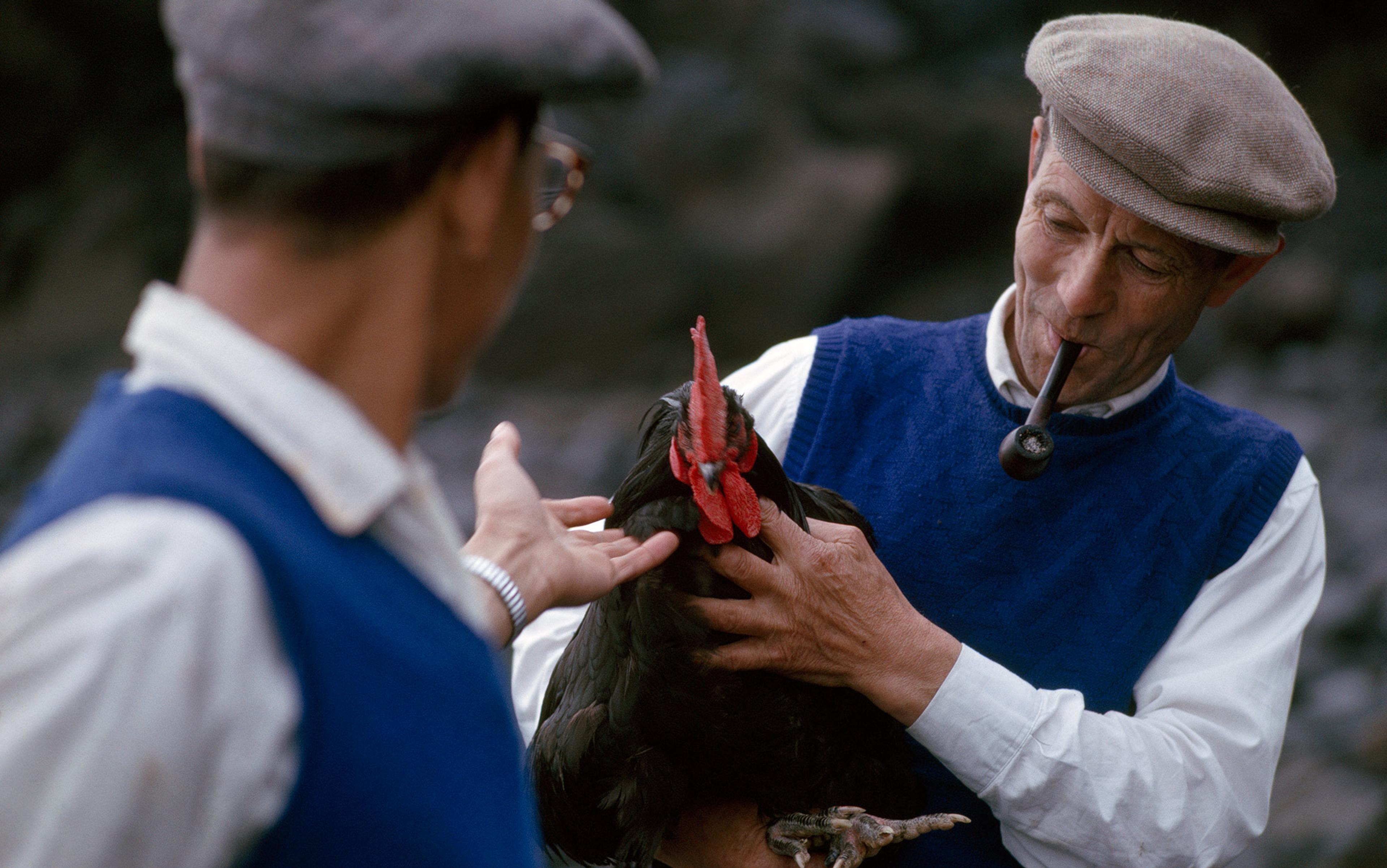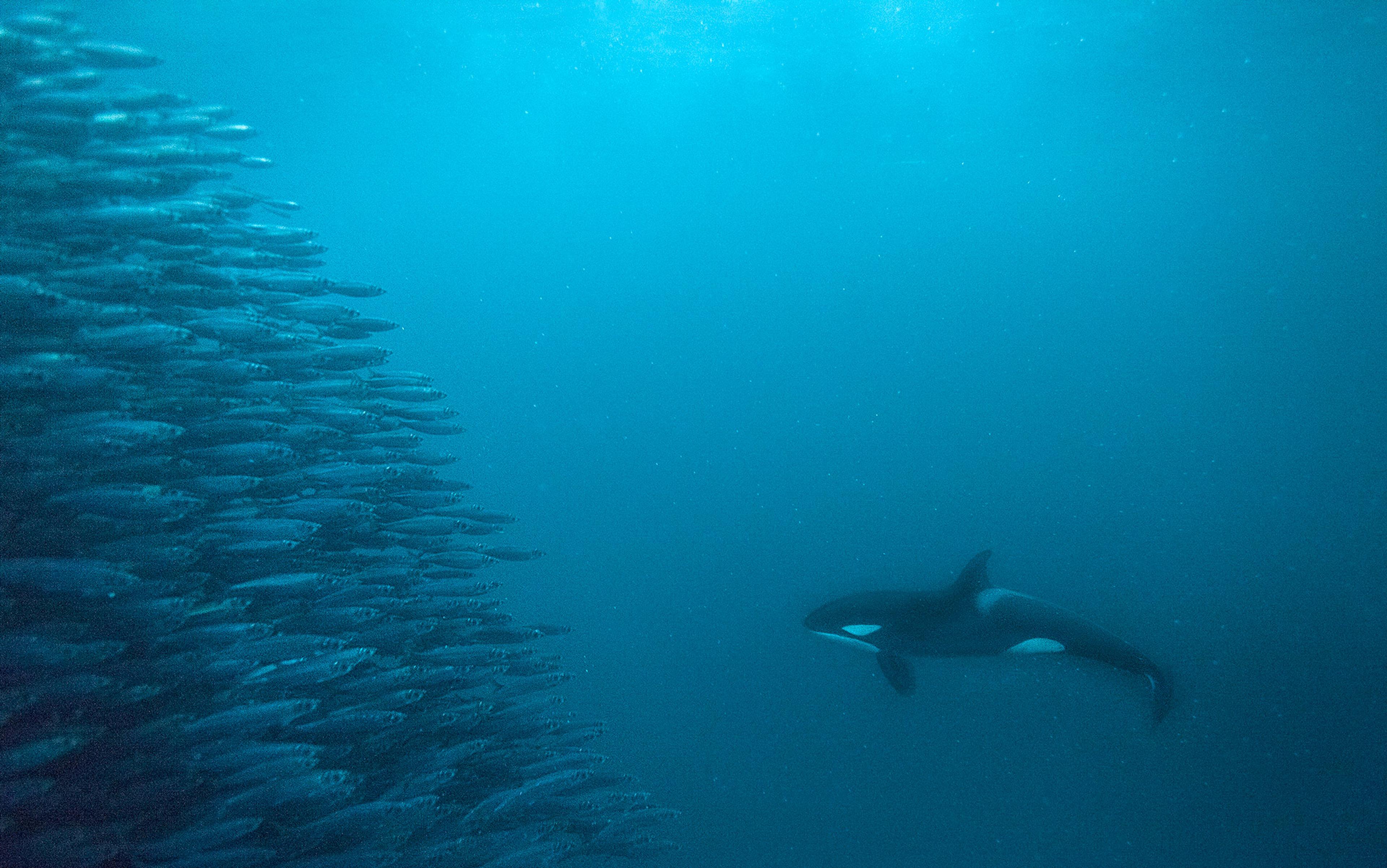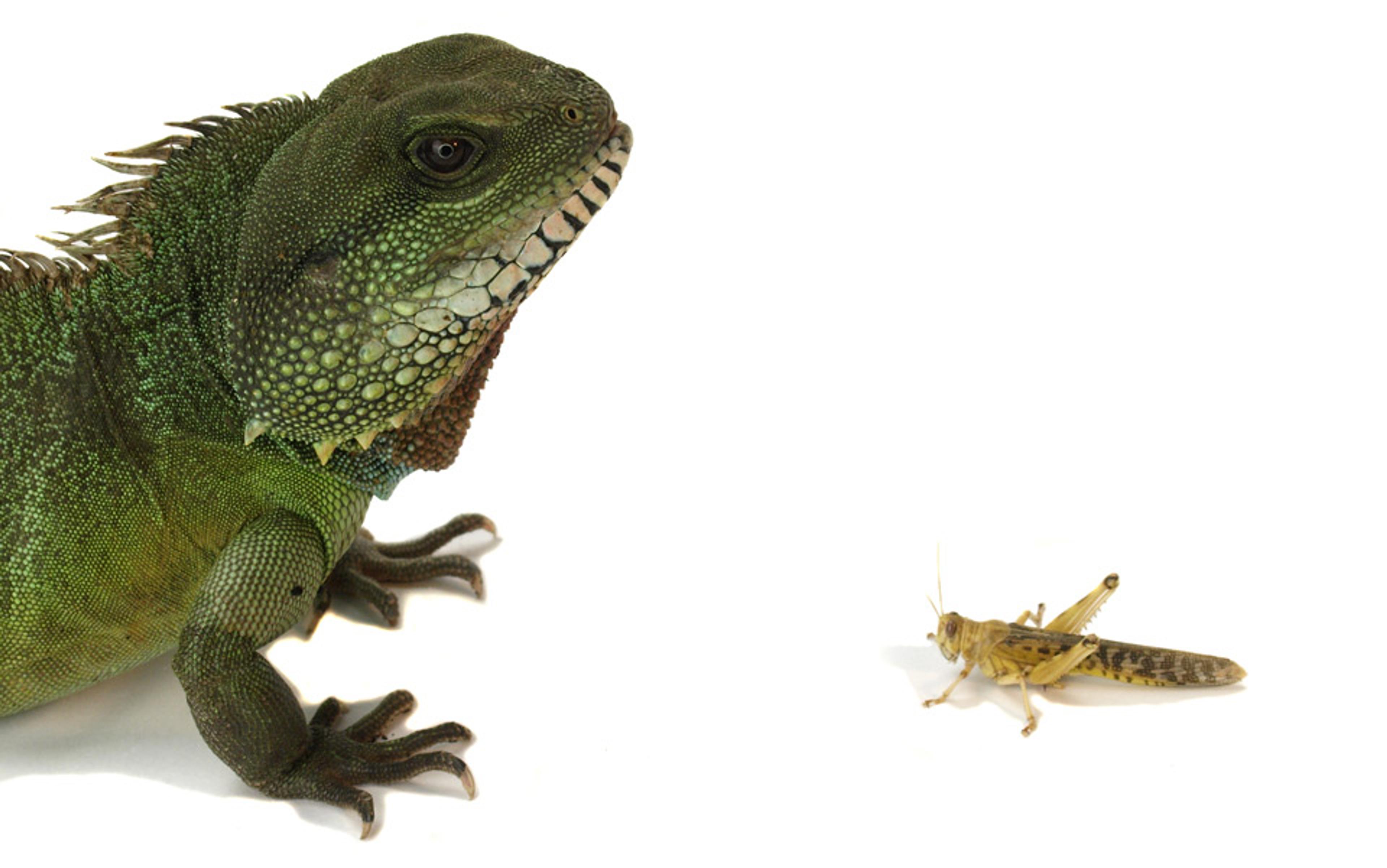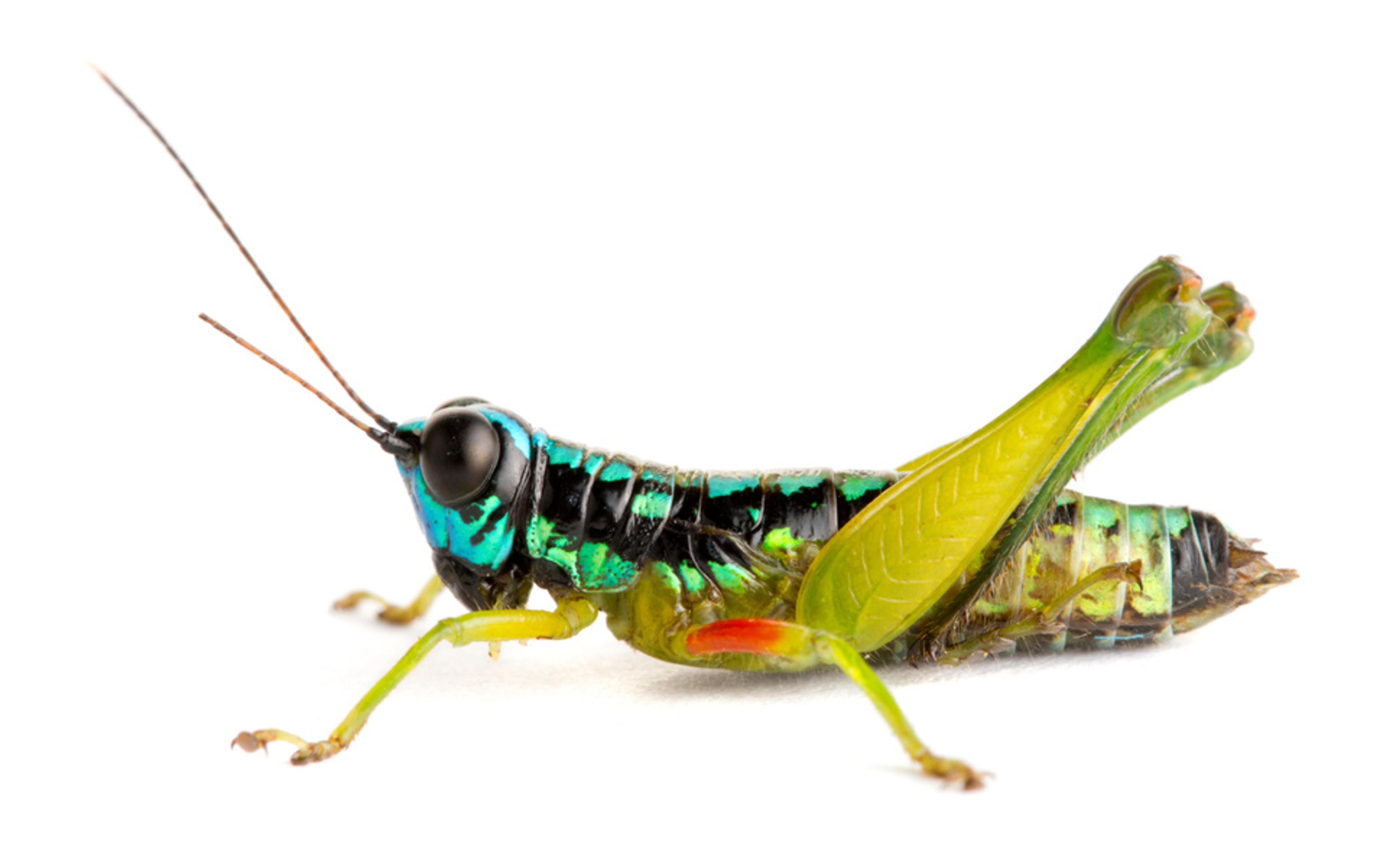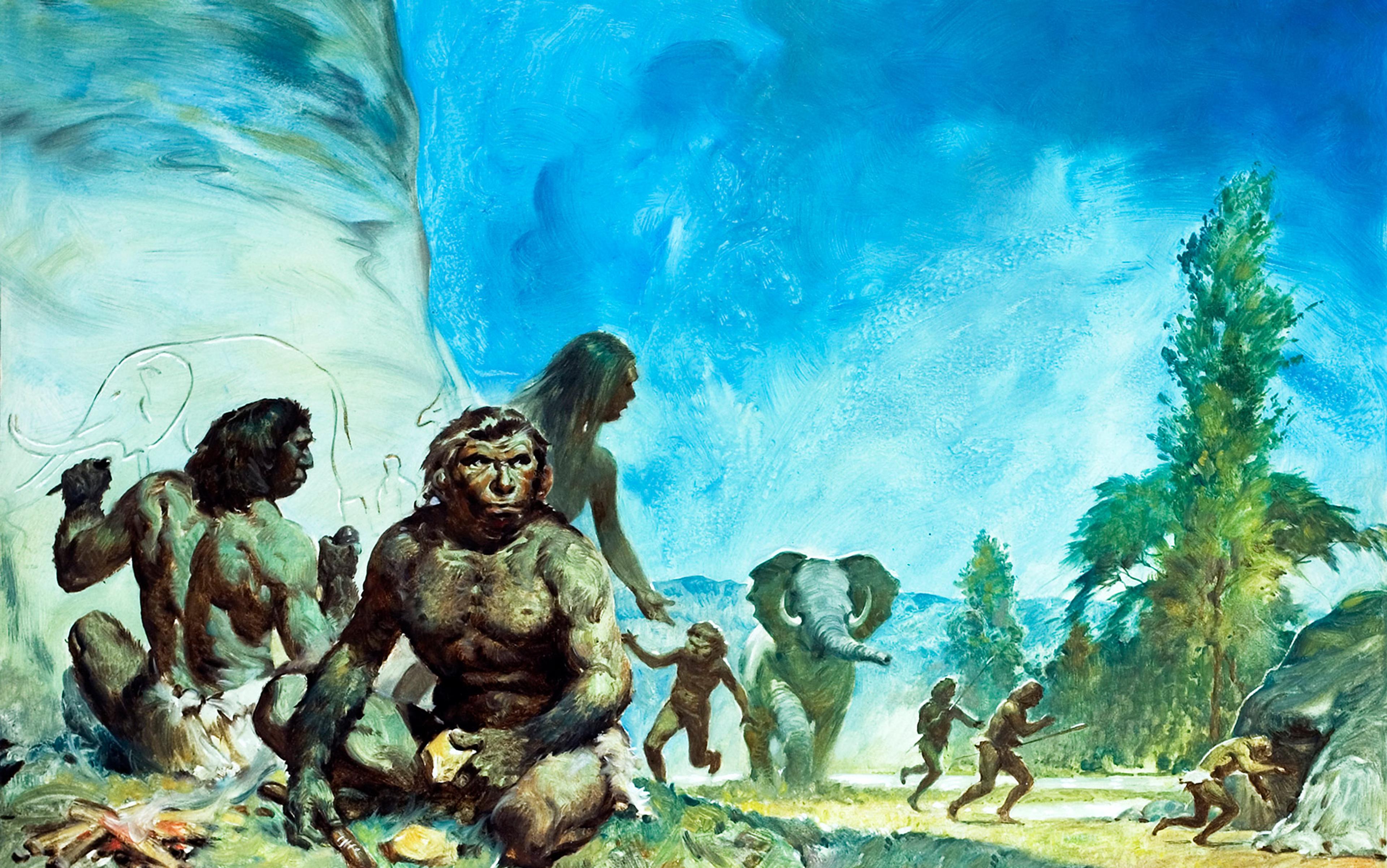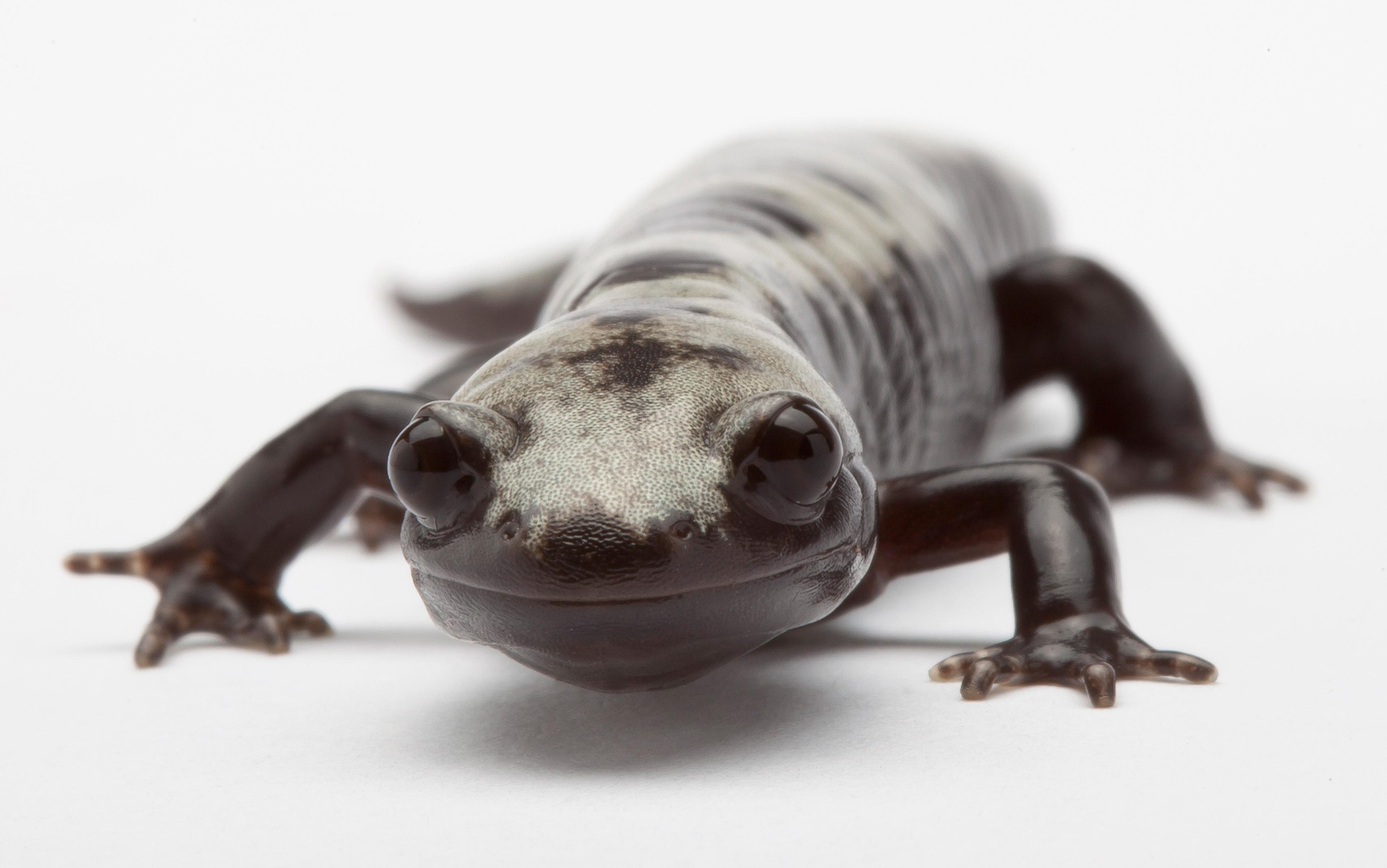Over a pint of beer, the great biologist, polymath and pub-lover J B S Haldane was asked if he would give his life to save his drowning brother. He is supposed to have said: ‘No, but I would to save two brothers, or eight cousins.’ He was referring to one of evolution’s puzzles: why animals (including humans) help one another. Under Darwinian natural selection, shouldn’t individuals always behave selfishly in order to maximise their chances for reproduction? Starting in the 1930s, Haldane was one of the first biologists to explain altruism by what we now call ‘kin selection’. An individual who is inclined to help family members is acting selfishly, from the point of view of their genes, as they are helping to ensure the reproductive success of their shared genetic material. You share, on average, half of your genes with your brother and an eighth of your genes with your cousin, hence Haldane’s nerdy joke.
Although Haldane apparently understood the principle of kin selection, it was a further 30 years before another English evolutionary biologist, W D Hamilton, nailed the mathematics of the theory in The Genetical Evolution of Social Behaviour (1964), one of the most important works in the field of evolution since its inception. The Selfish Gene (1976) by Richard Dawkins, and many other popular science books, were based on kin selection theory, which exposed the selfish machinations and calculations inherent in apparently altruistic behaviour.
So why hadn’t Haldane — a brilliant and inventive biologist — taken the idea of kin selection to its natural conclusion? In a startlingly honest interview for the Web of Stories website in 1997, the eminent evolutionary biologist John Maynard Smith, a former student of Haldane’s, said that this failure was partly political:
I have to put it down, to some extent, to political and ideological commitment… We were, I think, very reluctant, as Marxists would be, to admit that anything genetic might influence human behaviour. And I think that we didn’t say consciously to ourselves that this would be un-Marxist so we won’t do it, that’s not the way that the mind works; but it was a path that our minds were not, so to speak, prepared to go down, in quite an unconscious sense, whereas Bill [Hamilton] was very prepared to go down it… to make big breaks in science, which Hamilton did, it’s not enough to have the technical understanding of some technical point, it’s got to fit in with your world view that you should pursue this road.
Evolutionary biology, perhaps more than any other branch of science, is a political beast. In trying to explain how life arose, evolutionary biologists are tackling the prickly question of how — and why — we exist. Therefore it is not surprising that, as evolutionary biology advances, it is scrutinised and criticised every step of the way, down to its most fundamental level. We all know that some religious groups reject evolution in favour of a literal, biblical creation; and that others object to the social and moral implications of describing human as just another animal species. But there are also the internal political struggles, which occur both within and between evolutionary biologists. As Maynard Smith’s recollections of Haldane indicate, there was an internal conflict, conscious or subconscious, between political and scientific viewpoints. After watching Maynard Smith’s interview (conducted, incidentally, by Richard Dawkins), I wondered whether these interfering world views were just a symptom of the charged political climate of Europe in the 1940s and ‘50s. Or perhaps they were intrinsic to evolutionary biology itself. And so it was with Maynard Smith’s words in my mind that I, an impressionable junior scientist, recently began to doubt some findings of my own.
In 2009, I spent several months catching Berthelot’s pipits across islands in the North Atlantic. Every bird I caught was a precious data point, and I carefully measured each one, from beak to tail. Thanks to long-term research on Darwin’s Galapagos finches, island birds are poster boys for natural selection. Every biology textbook shows the way in which these species arise on different islands, each subtly different, with a different-shaped beak that is perfectly adapted to the food that it eats. Every undergraduate knows that these variations between finches on the Galápagos Islands gave Darwin some of his most important insights into how populations diversify and change over time.
My colleagues and I knew that our pipits differed across islands, not just in beak shape but in overall size, the length of their legs, and the size of their wings, too. And these differences were substantial — pipits on one island could be consistently 10 per cent larger than another. Imagine, as a comparison, if one country’s people had heads that were a pound heavier than a neighbouring country’s. How was natural selection driving these pipits apart — was it all about food, or did sex, predators or parasites have a role to play? We were looking for a close fit between the environmental challenges that the birds faced in particular places, and the adaptations that had responded to those challenges. This would be a neat story of natural selection. But when I looked at the data, it seemed that none of these factors were responsible. Instead, the differences in these birds seemed to be down to history and chance.
You will probably have heard that ‘scientists have used DNA evidence to uncover our African origins’. Indeed, it now seems certain that modern humans originated in Africa, and it is thanks to DNA that we can say this with such confidence. We know how DNA is inherited and how it changes over time, and can therefore make specific predictions about how much genetic diversity we expect to see in a group of individuals. Using increasingly complicated computer models, we can use these predictions to determine the exact signatures that different colonisation routes have written into our genes. And with modern DNA sequencing technology, we are able to get hold of huge amounts of genetic information from individuals across the world quickly and (fairly) cheaply.
The language we speak, the shape of our skulls, even our ability to fight certain diseases, can be predicted with a remarkable degree of accuracy, just from our distance from Africa
By comparing what the models predict about the patterns of DNA variation to what is actually observed, biologists have mapped our ancestors’ movements out of Africa in astonishing detail. Around 60,000 years ago, humans ventured out of Africa into the Middle East, and over the following 30,000 years their descendants spread across Europe and Asia, heading south-east through Thailand and Vietnam, across Indonesia and further south to Australia. It was not until around 15,000 years ago that a group from north-east Russia ventured across the Bering Strait, and colonised America from north to south. There are tens of thousands of years of history hidden in our genes.
But figuring out where we came from is just the beginning. What we really want to know is if and how our ancestors’ historical movements shaped who we are today. And the answer is that yes they have, dramatically. The language we speak, the shape of our skulls, even our ability to fight certain diseases, can be predicted with a remarkable degree of accuracy, just from our distance from Africa. To understand how this occurs, we need to think about how humans moved from one place to another. Travelling across unknown lands is a dangerous business, so we would expect ancient humans to avoid travelling a long way except when they needed to, and they probably didn’t travel en masse. Instead, when humans colonised new lands, it was probably a few intrepid explorers looking for new pastures. And the DNA evidence bears this out. Across the world, we see ‘bottlenecks’ at the genetic level — signatures where a small group of individuals, carrying a relatively small number of genetic variants, have set up new colonies. This is the key to understanding why the most genetically diverse human population can be found in Africa, while the populations of further migrations are descended from a much smaller stock of brave (or desperate) migrants.
When a new population is founded from just a few individuals, blind luck suddenly becomes very important to its biology. On the island of Tristan da Cunha in the South Atlantic, there are fewer than 300 permanent residents, and around half of them suffer from asthma. Researchers from the University of Toronto who studied the disease among islanders in the 1990s could find no apparent environmental or hygiene reasons for its high incidence, and concluded that genetics must play a role. The 282 residents they studied were descended from just 15 original settlers, who, it turned out, had an usually high prevalence of asthma among them. Because the founders were forced to interbreed, asthma increased in prevalence throughout the population. Scientists call this phenomenon a ‘founder effect’. It is, in more technical terms, the change in frequency of a trait when a new population is formed by a small number of individuals. And it is founder effects such as this that have left their signature, in our bodies and in our genes, to spread like ancient footprints out of Africa to the rest of the world.
Dawkins was fairly on-the-button when he described Not in Our Genes as a sort of scientific Dave Spart trying to get into ‘Pseud’s Corner’
If founder effects can explain so much variation within a species, is it possible that they can also account for bigger differences, even new species? In an article entitled ‘Change of genetic environment and evolution’ (1954), the evolutionary biologist Ernst Mayr suggested that founder effects could lead to entirely new species being formed. An ornithologist by training, Mayr had spent several years collecting birds in New Guinea for taxonomic study. He noticed that the bird species found on the most isolated, outer islands tended to be very different from their mainland relatives. Mayr wondered whether evolution might ‘speed up’ when a few individuals colonise a new area. After further research, he argued that, in small populations, new combinations of interacting genes could arise, which would in turn interact with natural selection and cause the population to undergo what he called a ‘genetic revolution’. Evolution would take a whole new path, and new branches of the evolutionary tree would eventually form, much more quickly than if natural selection alone had been the guiding force.
Today, almost all evolutionary biologists agree that founder effects occur, and can explain variation among individuals within a species. But whether they persist over evolutionary time, and especially whether they are involved in the formation of new species, is a point of contention. Experiments with small fruitfly populations in the lab have almost all failed to produce the expected evolutionary change. There have also been theoretical critiques of Mayr and other proponents of his theory. To boot, there were problems with finding evidence in the wild. Human populations are very closely related, and any divergence has occurred, in evolutionary terms, relatively recently. But biological species are often separated by millions of years, and if any founder effects had occurred by this point, their footprints might well have been erased. The consensus is that, aside from a few examples, founder effects have not been a major force in shaping the tree of life.
And it is here that I return to my island pipits, to John Maynard Smith, and to politics. Looking at my data, it seemed to me that founder effects were responsible for the differences that had arisen in these birds. I felt as though I had one of the clearest examples of how founder effects could persist in the wild, for many thousands of years. But at the back of my mind were doubts; island birds, remember, are emblems of the explanatory power of natural selection. Founder effects themselves are not adaptive, but the artefacts of colonisation by a small group of individuals. And there was Maynard Smith’s confession, which made me wonder if I’d been primed to find these results.
Probably the biggest controversy in modern evolutionary biology began with E O Wilson’s landmark book Sociobiology: The New Synthesis (1975), in which he argued that many aspects of human behaviour could be explained by natural selection. A year later, in The Selfish Gene, Dawkins popularised the gene-centric view of evolution. The critics, led by Stephen Jay Gould and Richard Lewontin, were swift to respond. They accused Wilson and Dawkins of having a right-wing political agenda, of biological determinism, of justifying the status quo, and of excusing selfish behaviour and societal inequality.
One of the most divisive questions was the relative importance of selection versus chance in evolutionary change. Gould and Lewontin summed up their arguments in the essay ‘The Spandrels of San Marco and the Panglossian paradigm: A Critique of the Adaptationist Programme’ (1979). They argued that adaptationists such as Wilson and Dawkins wanted to interpret everything in the natural world as being shaped by natural selection to be perfectly suited to it environment. By contrast, Gould and Lewontin emphasised the improvisational tinkering that marked evolutionary development. Many of an organism’s features, they said, were like the spandrels or spaces between archways in a building such as St Mark’s Basilica in Venice: beautiful in their own right, and looking as if they were designed to be so. But in fact spandrels are just a by-product of using an arch to support a domed roof. Similarly, many biological traits or characteristics look as though they have a purpose, but are actually just by-products. For another example, the human brain is capable of completing the Times crossword, but nobody would seriously argue that the brain evolved for that purpose.
Here I was, a left-wing scientist, with a scientific narrative that mirrored my political views. Had I, somehow, skewed my interpretation of pipit variation to fit my prejudices?
When I first read ‘The Spandrels of San Marco’ as a postgraduate student, I was bowled over. Here were two great evolutionary biologists challenging many of the tenets of evolution that I had been taught at university, in particular the centrality of natural selection and adaptation in explaining variations among organisms. It was science and it made perfect sense, but it was also subversive. As a proud leftie, I loved it. I read more Gould, Lewontin and other like-minded biologists, and became increasingly convinced by their arguments. The role of change and contingency in evolution seemed to free us from a tightly deterministic reading of biology. History, to Gould and Lewontin, was an open-ended, unpredictable process.
However, I was conscious that the scientific basis of this view was highly controversial. I realised just how controversial when I first read the New Scientist review of the book Not in Our Genes (1984) by Lewontin, Steven Rose and Leon Kamin. Dawkins wrote the review, and it was devastating — Gould and Lewontin’s ‘adaptationist paradigm’ was a straw man, and I had to concede that Dawkins was fairly on-the-button when he described Not in Our Genes as a ‘sort of scientific Dave Spart trying to get into “Pseud’s Corner”’.
Even admirers of Gould and Lewontin lamented their views on natural selection. The biologist Jerry Coyne, a former student of Lewontin’s, wrote that:
When I was at Harvard with Dick [Lewontin] and Steve [Gould], it was almost as though selection was a forbidden topic — just once I would have liked either of them to have admitted openly, ‘Yes,
of course
selection is the only plausible explanation for adaptations.’ In their fight against unthinking adaptationism, they nearly threw the baby out with the bathwater.
Coyne had a point. Dawkins had a point. But I still felt that Gould and Lewontin were on to something. I was confused.
As it turned out, my research would throw me right back into this mess. Founder effects fit perfectly into Gould’s point of view (and he had argued for them in his own research on land snails). It’s all there: random chance and blind luck versus survival of the fittest and the evolutionary arms races of Dawkins et al. And Mayr’s original work on ‘genetic revolutions’ had clearly struck a chord with Gould. Genetic revolutions were central to the theory of punctuated equilibria, in which Gould, along with the biologist Niles Eldredge, argued that the tree of life does not grow gradually and smoothly: rather, species remain unchanged for long periods of time punctuated by brief, dramatic periods of change. Here, as with much of Gould’s work, were striking parallels between scientific and political debates. A society characterised by steady change will oppose major transformations such as revolution. Punctuated equilibria, on the other hand, fitted in with the political theory of human societies described by the likes of Marx, Engels and Hegel.
As soon as I heard the Maynard Smith interview, all the conflict and confusion I had felt when I first read about the sociobiology debate — Gould, Lewontin, punctuated equilibria, politics — all that I’d stored away and half-forgotten, came flooding straight back. Here I was, a left-wing scientist, with a scientific narrative that mirrored my political views. Had I, somehow, skewed my interpretation of pipit variation to fit my prejudices? Worse, had I subconsciously skewed the results? I checked and double-checked, and found the same thing. I tried finding new ways of looking at my data, but still I came to the same conclusion. The founder effects looked real. If I had done something wrong, I couldn’t figure out what it was.
Political beliefs affect science at many levels, from decisions on what research is funded, to the subconscious biases of individual scientists. And for my part, I am sure that my political views have influenced my scientific research, and all along I haven’t had a clue. We constantly make subjective decisions as scientists: which questions get us fired up, which do we ignore, when do we consider a result significant enough to publish, how do we approach an analysis, and how do we interpret our findings. We strive for objectivity, but we can never truly achieve it. Instead we can but hope that the self-correcting process of science weeds out the rubbish, and that truth emerges over time.
So maybe radical scientists are not such a bad thing after all. Perhaps the likes of Gould and Lewontin, who are able to take a step back and look critically at their whole field, play an essential role in keeping science in check, and therefore in moving it forward. They might have overstepped the mark at times, but their critique of adaptationism was one that needed to be made, and is one that has improved the scientific rigour of evolutionary biology overall. Biologists are now much more careful of inventing adaptive explanations for everything they see, and are more amenable to non-adaptive explanations.
As for my paper on pipits, I’m at the nerve-racking stage of submitting it for peer-review. After checking and double-checking I can only conclude for now that the founder effects were real, and hope that the peer-review and, more importantly, post-publication scrutiny of fellow scientists will ferret out any problems. Perhaps the best plan will be to find a capitalist lapdog to review it for me.
